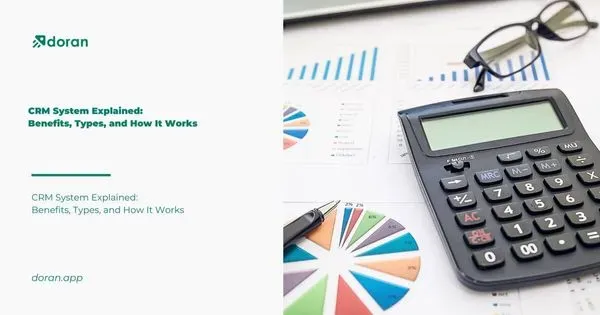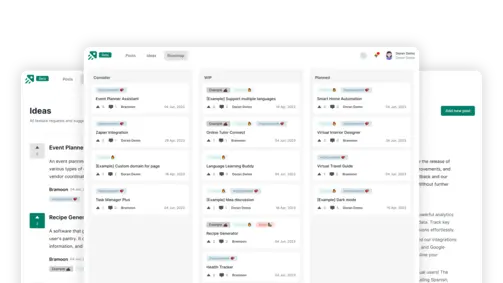The Ultimate Guide to SaaS Product Roadmap for Founders
Create changelog and product roadmap for your product
Explore nowTable of contents 7 min
Saas product roadmap plays an important role. Designed specifically for founders, this guide provides in-depth insights and practical strategies to master the art of saas product roadmap planning. Discover how to align your vision, prioritize features, and drive your product’s success in the dynamic SaaS landscape.
The Importance of SaaS Product Roadmap
A well-defined SaaS product roadmap is crucial for the success and growth of any SaaS business. It provides a strategic blueprint that aligns the product development team, enables effective decision-making, and sets a clear direction for delivering value to customers and achieving business objectives. Here are the reasons that SaaS needs to care about the product roadmap.
-
Provides a clear strategic vision and direction for the SaaS product
-
Helps align the product development team and stakeholders towards common goals
-
Enables effective prioritization of features and resources
-
Guides decision-making and resource allocation throughout the product lifecycle
-
Facilitates communication and transparency with internal teams and external stakeholders
-
Enhances customer satisfaction by setting realistic expectations and delivering on promises
-
Assists in identifying dependencies, risks, and potential roadblocks early on
-
Supports agile and iterative development methodologies
-
Aids in long-term product planning and strategic business growth
-
Serves as a valuable tool for investor pitches and fundraising efforts.

A well-defined SaaS product roadmap is crucial for the success and growth of any SaaS business
How to Use Product Roadmaps
Product roadmaps are invaluable tools for product management and development. Here are some key ways to utilize them effectively:
-
Communicating Vision and Strategy: Roadmaps visually articulate the product’s vision and strategic goals, aligning stakeholders and team members around a common understanding of the product’s direction.
-
Prioritizing Features and Releases: Roadmaps help prioritize features based on business value, customer needs, and market dynamics. They provide a clear plan for feature releases, considering dependencies and resource availability.
-
Aligning Cross-Functional Teams: Roadmaps foster collaboration and coordination among teams by providing a shared view of the product’s evolution. They ensure that different functions work towards common objectives and coordinate efforts effectively.
-
Managing Stakeholder Expectations: Roadmaps are valuable for managing stakeholder expectations by providing transparency about upcoming features and release timelines. Regular updates maintain alignment and build trust.
-
Adapting to Changes: Roadmaps should be flexible to adapt to changing circumstances. They allow for adjustments based on market conditions, customer feedback, or strategic shifts, ensuring the product remains aligned with evolving needs.
-
Guiding Decision-Making: Roadmaps provide a strategic framework for decision-making, allowing trade-offs and choices to align with the overall product vision and goals. By effectively utilizing product roadmaps, product managers can communicate vision, prioritize features, align teams, manage expectations, adapt to changes, and make informed decisions, ultimately leading to successful product development and customer satisfaction.
Read More: The Importance of customer feedback to SaaS Founders
SaaS Roadmap Types & Examples
SaaS product development requires effective planning and communication through various roadmap types. Here are some examples:
-
Feature Roadmap: This type focuses on specific feature releases, prioritization, and timelines. For instance, a SaaS company may highlight upcoming features like enhanced reporting or third-party integrations.
-
Technology Roadmap: It outlines the necessary technology initiatives, upgrades, or integrations to support product growth. Examples include migrating to a cloud-based infrastructure or implementing data encryption measures.
-
Integration Roadmap: This roadmap emphasizes integrating the SaaS product with external systems or platforms to enhance functionality. It may include planned integrations with popular CRM systems or marketing automation platforms.
-
Platform Roadmap: It outlines the development of a robust platform, including APIs or SDKs. This enables extensibility and customization, such as creating a marketplace for app integrations.
-
Customer-focused Roadmap: Prioritizing features based on customer needs and feedback, this roadmap ensures the product addresses pain points. It may include requested features from high-value customers or usability enhancements. By utilizing these roadmap types, SaaS companies can effectively plan, communicate, and execute their product development strategies. Whether focusing on features, technology, integrations, platforms, or customer needs, roadmaps provide clarity and direction, aligning with business goals and meeting customer expectations.

Product roadmaps are invaluable tools for product management and development
Step-by-Step to Create SaaS Product Roadmap
Creating a SaaS product roadmap is a critical process that requires careful planning and alignment with business objectives. Here is a step-by-step guide to help you create an effective SaaS product roadmap.
Step 1: Define Your Product Vision and Goals
Start by clarifying your product vision and identifying the goals you want to achieve. Understand the problems your product solves and the value it delivers to customers. This sets the foundation for your roadmap and ensures alignment with your overall business strategy.
Step 2: Conduct Market Research and User Analysis
Thoroughly research your target market and identify customer needs, pain points, and emerging trends. Analyze user feedback, conduct surveys, and gather insights to understand your users’ requirements and preferences. This information will help shape your roadmap and prioritize features accordingly.
Step 3: Determine the Roadmap Structure
Choose a roadmap structure that best suits your needs. This could be a timeline-based roadmap with specific release dates or a theme-based roadmap focusing on key initiatives. Consider using swimlanes to categorize features, such as core functionality, enhancements, or integrations. Select a format that allows for clear visualization and easy communication.
Step 4: Prioritize Features and Initiatives
Based on your market research and user analysis, prioritize the features and initiatives that align with your product vision and goals. Consider factors such as customer impact, business value, technical feasibility, and dependencies. Utilize techniques like the MoSCoW method (Must-Have, Should-Have, Could-Have, Won’t-Have) or the RICE prioritization framework (Reach, Impact, Confidence, Effort) to prioritize effectively.
Step 5: Set Realistic Timelines and Milestones
Establish realistic timelines and milestones for feature releases and key initiatives. Consider factors like development resources, dependencies, and market demand. Break down larger initiatives into smaller, manageable tasks, and allocate appropriate timeframes for each. This ensures a clear roadmap timeline and helps manage stakeholder expectations.

By following these steps, you can create a well-defined and actionable SaaS product roadmap
Step 6: Collaborate and Gather Input
Engage cross-functional teams, including product managers, engineers, designers, and stakeholders, in the roadmap creation process. Gather input and insights from different perspectives to ensure a well-rounded roadmap. Collaboration fosters alignment, increases ownership, and enhances the overall quality of the roadmap.
Step 7: Communicate the Roadmap
Effectively communicate your roadmap to internal teams, executives, and stakeholders. Use visualizations, such as presentations or online tools, to clearly convey the roadmap structure, timelines, and priorities. Provide context, explain the rationale behind the decisions, and address any questions or concerns. Regularly update and communicate changes as needed.
Step 8: Continuously Review and Iterate
Product roadmaps are not static documents. Continuously review and iterate based on new market insights, user feedback, and evolving business priorities. Adapt the roadmap to accommodate changes in the competitive landscape or emerging market opportunities. Regularly revisit and refine your roadmap to keep it relevant and responsive to market dynamics.
Step 9: Align Execution with the Roadmap
Ensure that your product development and execution align with the roadmap. Break down roadmap features into actionable tasks, create development sprints, and monitor progress. Regularly track and report on roadmap execution, making adjustments as necessary to ensure the roadmap’s successful implementation.
By following these steps, you can create a well-defined and actionable SaaS product roadmap. This roadmap will serve as a strategic guide, aligning your product development efforts with your business goals, customer needs, and market dynamics. Regularly revisit and refine your roadmap to ensure its effectiveness in driving the success of your SaaS product.
Conclusion
Equip yourself with the knowledge and strategies to excel in saas product roadmap planning as a founder. With a deep understanding of the dynamic SaaS landscape, you can align your vision, prioritize features, and propel your product’s success. Embrace the power of effective roadmaps and steer your business towards growth and innovation.
What to not miss out on our blog
Gain insightful knowledge and invaluable experiences from dedicated experts.

CRM System Explained: Benefits, Types, and How It Works
Discover everything about CRM system. Learn the benefits and how a CRM system works to improve customer relationships and streamline business operations.

Are you ready? Start your free trial today.
Enhance communication, keep track of the progress, understand customers' insight and more by taking your first trial on Doran.
Sign up for free



